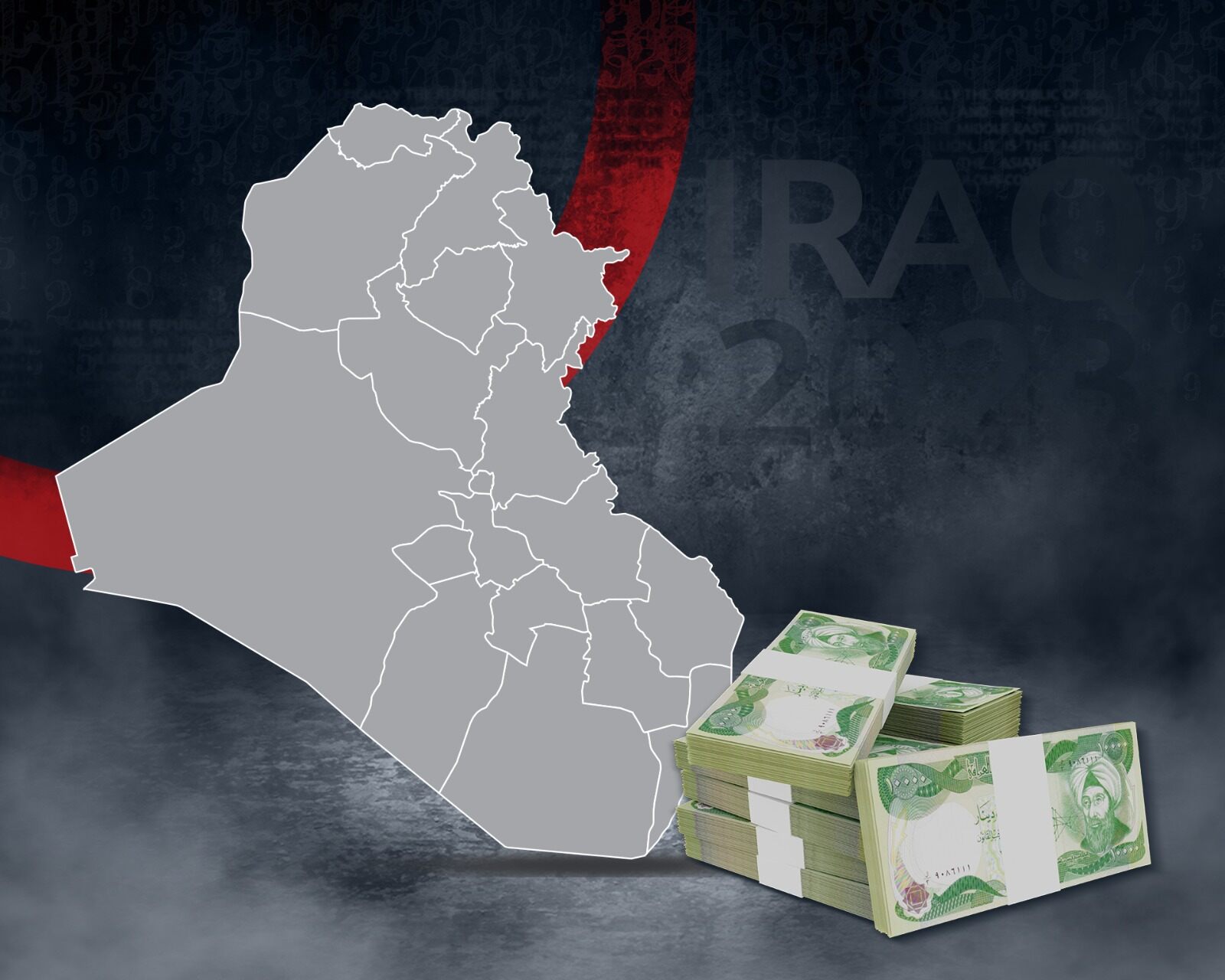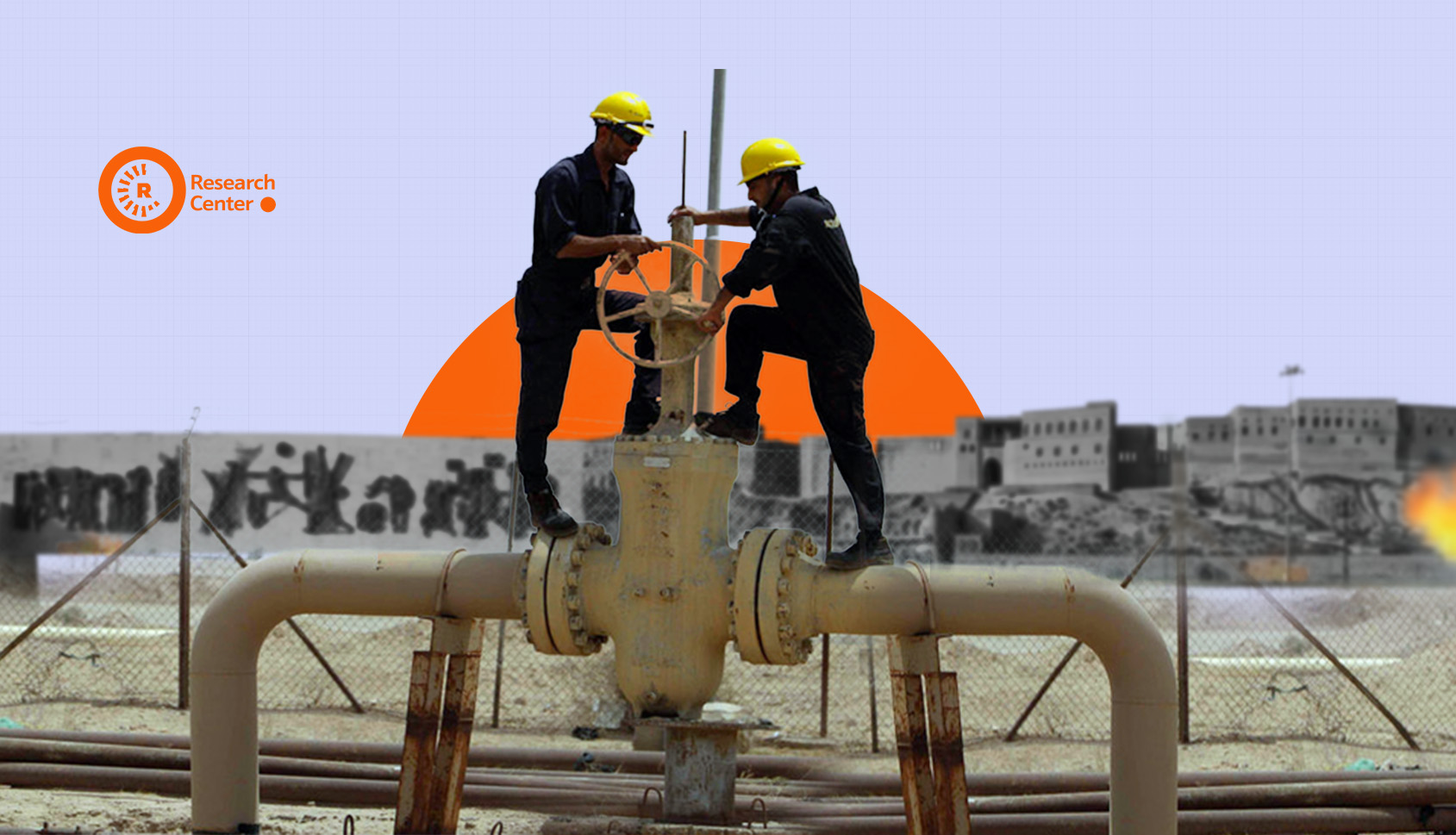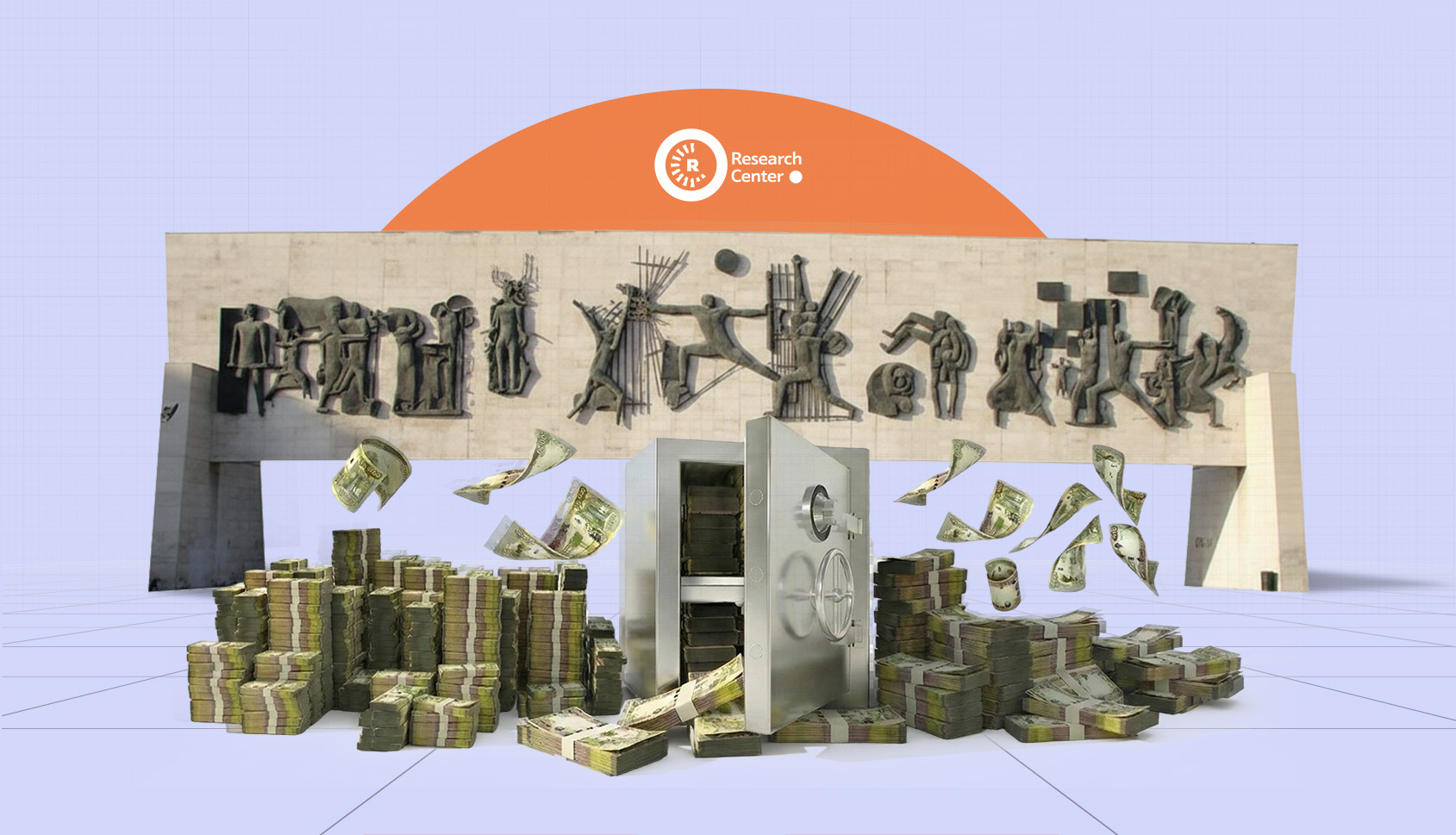Iraq's Financial Transparency: The 2023 Budget Figures and Ministry of Finance Reports on Expenditures and Revenues
14-03-2024
Overview
The Iraqi Finance Ministry recently published the finalized financial report for last year, revealing a deficit of 6.7 trillion dinars. Despite initial expectations that the delayed approval of the annual budget would result in a surplus due to increased revenues, excessive expenditures in the final month of the year led to a shortfall. The report indicates that total expenditures amounted to 142 trillion dinars, while total oil and non-oil revenues only reached 135 trillion dinars.
Criticism abounds regarding the inconsistency and inaccuracies found in various reports in Iraq, particularly financial ones. Despite the significance of these reports, discrepancies persist, such as the inclusion of incorrect figures. For instance, in the three-year Iraqi budget law, an error of 1.3 trillion dinars was identified in compiling expenditure figures. Anbar province's operating and investment expenditures were initially stated as 466 billion dinars but were later found to be 436 billion dinars upon closer examination. Subsequently, the Ministry of Finance's final account indicates expenditures totaling 850 billion dinars.
Despite the discrepancies and inaccuracies in the numbers, it's crucial to note the significant increase in expenditures, particularly towards the end of the year. Reports indicate that total expenditures until November amounted to 109 trillion dinars, but by December 31, 2023, they had surged to 142.4 trillion dinars. This signifies a staggering expenditure of 32 trillion dinars within just one month, which is three times the average expenditure of previous months and twice that of the preceding month.
While it's true that the budget was approved late last year, it's important to ascertain whether the revenue and expenditure figures align with the budget. Additionally, understanding why expenses tripled towards the end of the year is crucial. It's worth investigating which institutions' expenditures mirror the budget, and which ones are significantly lower or higher. Furthermore, examining the variance between oil and non-oil revenues in both the budget and final accounts would provide valuable insights.
Contrasting the Budget Approved by the parliament with Iraqi Ministry of Finance's Revenues and Expenditures
Amidst grievances, the Iraqi parliament approved a three-year budget in the middle of last year. However, despite the urgency for amendments this year, it's yet to make its way from the Council of Ministers to parliament, despite two months having passed.
As per the reports from the Iraqi Ministry of Finance and the annual budget report, the figures outlined in the budget law are legally designated for publication in the Official Gazette of Iraq. However, discrepancies arise as the figures allocated to ministries and institutions, including operating expenditures and investments, do not align with the actual expenditures and revenues reported by the Ministry of Finance for the previous year.
In terms of revenue, the budget projected Iraq's total revenue in 2023 to reach 134.5 trillion dinars, comprising 117.2 trillion dinars from oil revenue and 17.3 trillion dinars from non-oil revenue. However, according to the Ministry of Finance's annual report, Iraq's total oil and non-oil revenues amounted to 135.6 trillion dinars, with oil revenues at 125.8 trillion dinars and non-oil revenues at 9.7 trillion dinars. This indicates a discrepancy of 1.1 trillion dinars between the projected revenue in the parliamentary law and the actual revenue received by the Ministry of Finance, attributed to high oil prices. Additionally, the variance for non-oil revenue stands at 7.6 trillion dinars.
In terms of expenditures, the budget law initially allocated 198 trillion dinars, but only 142 trillion dinars have been spent thus far this year, which seems reasonable. However, in December 2023 alone, expenditures spiked to 32 trillion dinars!
Furthermore, the budget originally planned to borrow 64 trillion dinars to cover the deficit, but the current deficit stands at 6.7 trillion dinars. This deficit would have been avoidable if the significant expenditure in December had not occurred.
Upon closer examination of expenditures, peculiar fluctuations emerge in institutional spending, evident in both the 2023 budget and the final accounts report of the Iraqi Ministry of Finance. For instance, let's consider the Iraqi parliament (House of Representatives): while the budget allocated 418 billion dinars, the actual expenditure amounted to 582 billion dinars, with 581 billion dinars utilized, of which 474 billion dinars were for the salaries of parliamentarians and employees. In contrast, for the presidency, although the budget allocated 94 billion dinars, only 71 billion dinars were spent, with 43 billion dinars allocated for salaries.
In contrast to all other ministries and provinces, the disparity between the budget allocation and actual spending is particularly notable in the case of the Ministry of Oil in Iraq. According to the 2023 budget, the total expenditure for the Ministry of Oil, encompassing both operating and investment costs, was projected to be 23.2 trillion dinars, with 7.4 trillion dinars allocated for operating expenses and 15.8 trillion dinars for investment. However, despite the swift expenditure of 10 trillion dinars for investment in December, the total expenditure has yet to reach 12.9 trillion dinars.
Based on the figures outlined in the 2023 budget and Article 40, an allocation of 16.4 trillion dinars was expected for the Kurdistan Region. However, the final report from the Iraqi Ministry of Finance for 2023 indicates that no expenditure was allocated for the Kurdistan Region, reflecting a significant discrepancy.
Implications of Rapidly Spending Tens of Trillions of Dinars
As per the Ministry of Finance, the total expenditure initially stood at 109 trillion dinars, with 97 trillion dinars allocated for operating expenses and 12.3 trillion dinars for investments. However, in the subsequent 31 days leading to the year-end report, the total expenditure surged to 142 trillion dinars. Of this amount, 118 trillion dinars were earmarked for operating costs, while 24 trillion dinars were allocated for investments. Notably, this indicates a doubling of investment, not for ministries such as Water Resources, Agriculture, Commerce, or Education, but specifically for the Ministry of Oil.
Although announcements of agreements and projects occur daily, their rapid signing, groundbreaking ceremonies, meetings, visits, and memoranda of understanding do not guarantee revival. Rather, the delayed implementation becomes evident over time. After several years, the implementing company may not only show reluctance to adhere to the agreement but may also withdraw from the project entirely. The recent withdrawal of Shell company from the construction of Basra petrochemical city, also known as the Nibras project, signed in 2015, serves as a prime example of this phenomenon.
Another crucial aspect to consider is the accumulation of expenditures towards the end of the year, reflecting the inefficiencies in Iraq's operating and investment expenditure system, as well as shortcomings in interconnecting the financial system and the absence of a robust digital economy. Consequently, tasks that were not completed over the course of three months, delayed signatures, and pending approvals are rushed to completion within three days to prevent funds from being returned. This expedited process is essential, particularly for meeting urgent financial needs.
Furthermore, the accelerated expenditure of trillions of dinars within a few days will inevitably have a profound impact on projects. Quick planning, tendering, and design processes are unlikely to yield favorable results. Consequently, projects in Iraq often experience delays and remain incomplete, requiring additional repairs upon completion. According to the Iraqi Ministry of Planning (2022), a staggering 1452 projects across Iraq have been suspended and left incomplete, incurring costs amounting to 24 trillion dinars.
Conclusion
The disparities between institutional expenditures outlined in the 2023 budget and the actual figures reported by the Iraqi Ministry of Finance amount to trillions and billions of dinars. This raises pertinent questions about the efficacy of the annual budget in Iraq. If the budget is indeed implemented, why do such significant differences persist? Furthermore, why are these variances not addressed and rectified during the preparation of the following year's budget? Is the annual budget merely a topic for parliamentary discussion on paper, given that it is often described as an estimate?
Furthermore, what actions are being taken by the parliament and the finance committee to address the recurring discrepancy between the financial report and the annually set budget? Are they aware of the allocated amounts for investment projects and the actual expenditures incurred? How much was earmarked for salaries, and what is the extent of the overspending in this regard? Additionally, how much funding was allocated to ministries and institutions, and what proportion of it has been utilized? Clarifying these discrepancies and ensuring accountability in budget allocation and expenditure management are essential tasks for the parliament and the finance committee.
For over two decades, there has been a stark disparity between the projected oil revenue for Iraq in the budget and the actual figures achieved by the end of the year. This discrepancy begs the question: why hasn't the mechanism been reviewed? Iraq's revenue sources are relatively straightforward, primarily consisting of oil production and export earnings, along with receiving the money. Despite this simplicity, the consistent discrepancy between projected and actual oil revenue calls for a thorough reassessment of the budgeting process.
Currently, the discrepancy may not seem consequential, given the current high oil prices. However, should oil prices drop below $50, the taxation on oil prices and exported barrels may be deemed inaccurate. Furthermore, according to the 2023 budget, Iraq was expected to generate 12.9% of its revenue from non-oil sources and 87.1% from oil revenue. However, as per the Ministry of Finance report as of December 31, 2023, oil revenue constituted 93% of total federal revenue, with non-oil revenues contributing only 7%.
Sources
mof.gov.iq. (n.d.). وزارة المالية, جمهورية العراق. [online] Available at: https://mof.gov.iq/Pages/MainMof.aspx [Accessed 25 Feb. 2024].
moj.gov.iq. (n.d.). وزارة العدل - جمهورية العراق. [online] Available at: https://moj.gov.iq/view.7273/ [Accessed 25 Feb. 2024].






